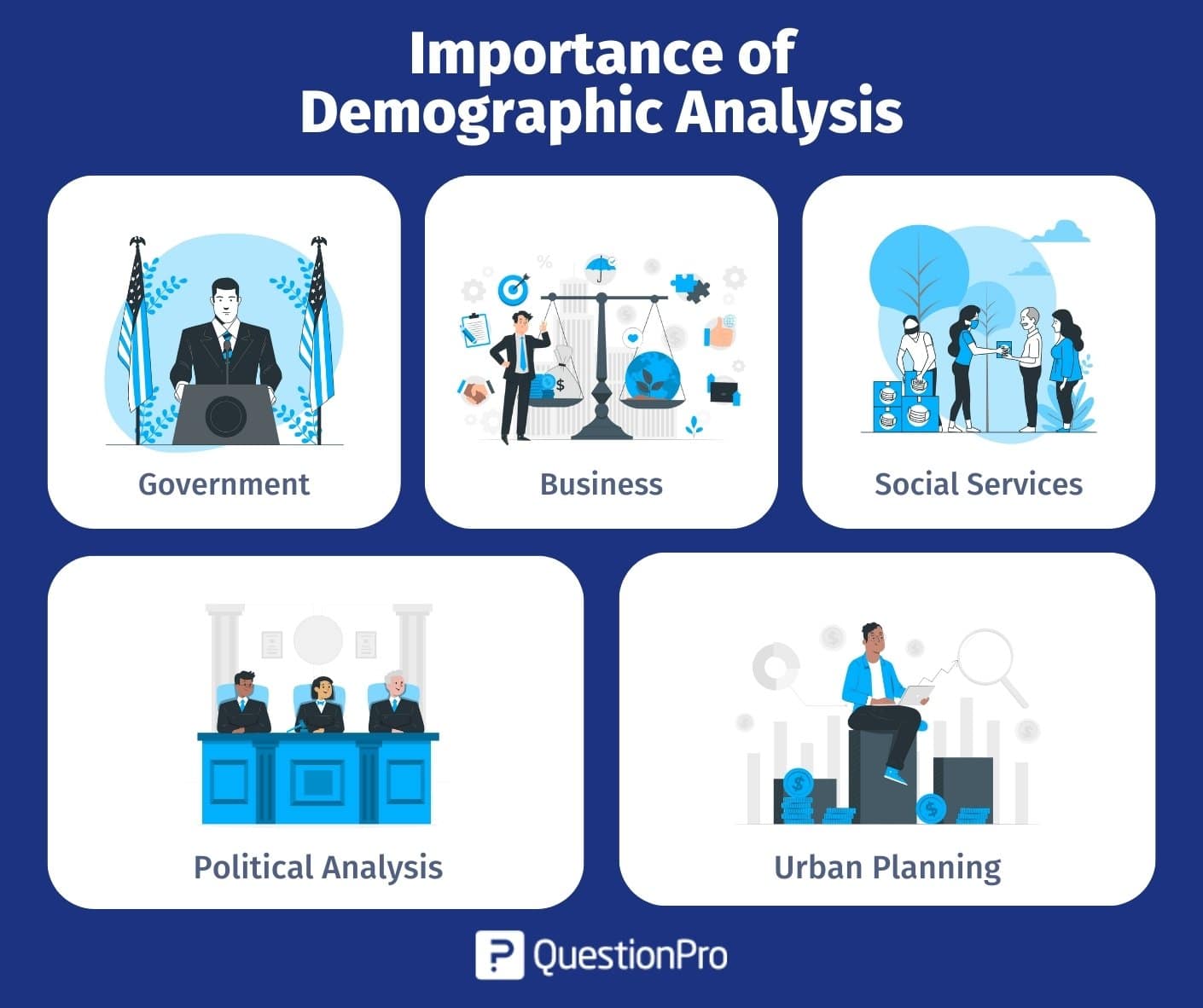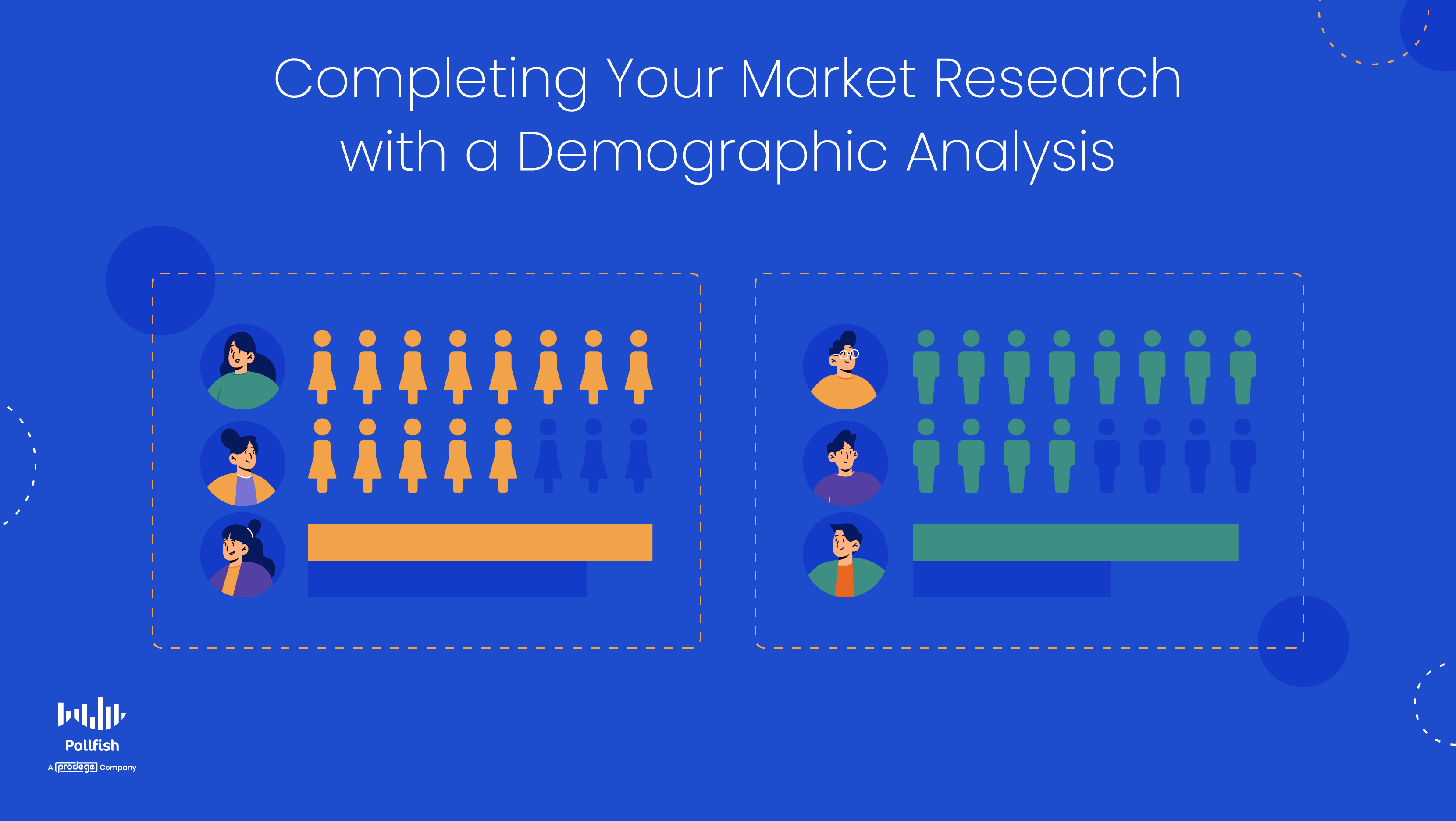Population and Demographic Analysis: Understanding Key Trends for Business Growth
In today’s fast-paced world, understanding population and demographic trends is more crucial than ever for businesses, marketers, policymakers, and researchers. A demographic analysis provides essential insights into the makeup of a population, which can be used to predict future trends, identify target audiences, and make data-driven decisions. In this article, we’ll explore the importance of population demographics, the process of demographic analysis, and how these insights can shape strategies for growth, marketing, and development.

What is Demographic Analysis?
Demographic analysis is the study of populations based on factors such as age, gender, income, education, race, marital status, occupation, and location. This analysis can be applied to different segments of the population, whether it’s a local community or a broader national or global scale. By understanding these key variables, businesses and organizations can identify patterns and trends that can influence decision-making processes.
Demographics can influence everything from product development and marketing strategies to urban planning and healthcare policies. Conducting an effective demographic analysis helps organizations tailor their efforts to meet the specific needs and behaviors of their target audience.
Why is Demographic Analysis Important?
Demographic data plays a pivotal role in shaping a wide array of business strategies. Here’s why demographic analysis is so important:
1. Target Audience Identification
Understanding your target audience’s demographic profile helps you design personalized marketing campaigns. For example, if you’re selling high-end tech gadgets, you may focus on younger, tech-savvy individuals with higher disposable income. By pinpointing the demographic traits of your customers, you can craft messages that resonate with them and address their unique needs.
2. Market Segmentation
With demographic data, you can segment the market into various groups based on shared characteristics. This segmentation allows you to develop more precise marketing strategies that cater to the needs of each group, improving the efficiency of your campaigns and increasing conversions.
3. Predicting Future Trends
Demographic data can provide insights into long-term population trends. For instance, an aging population may result in an increased demand for healthcare services, retirement planning, and eldercare products. By analyzing demographic shifts, businesses can anticipate and prepare for emerging market demands.
4. Resource Allocation
For policymakers and business leaders, demographic analysis can guide the allocation of resources. Whether it’s funding for public services, the opening of new retail locations, or expanding into a new geographical market, understanding population trends ensures that resources are used efficiently.

Key Factors in Demographic Analysis
To perform an effective demographic analysis, several factors need to be considered:
1. Age
Age is a key demographic variable that influences consumer behavior. Young adults, for example, may be more inclined to purchase fashion items or technology, while seniors may prioritize healthcare products and services. Understanding the age distribution of a population helps businesses tailor their offerings.
2. Gender
Gender plays a significant role in shaping preferences and buying habits. Certain products and services may appeal more to one gender than the other. For example, cosmetics and personal care products are often marketed differently to women than to men. Additionally, gender demographics help shape advertising messages and brand positioning.
3. Income
Income levels are crucial in understanding purchasing power. Higher-income populations may be more willing to spend on luxury items, while those with lower income may focus on value-driven products. Analyzing income data allows businesses to adjust their pricing strategies to meet the needs of different segments.
4. Education
Education level often correlates with income and job opportunities, influencing consumer spending patterns. Higher levels of education may lead to a greater focus on products related to career development or intellectual enrichment, such as books, seminars, or tech tools for professionals.
5. Location
Geographic data is essential for businesses to identify regional preferences and tailor their products or services accordingly. Urban populations may prioritize convenience-based services, while rural areas may require more functional offerings. Location-based analysis helps in market expansion, ensuring that products and services meet regional demands.
6. Marital and Family Status
Family dynamics and marital status can influence purchasing decisions. Families with children may be more inclined to spend on family-oriented products, while singles may prioritize personal or entertainment-focused items. This insight is crucial for product customization.
How to Conduct a Demographic Analysis
The process of conducting a demographic analysis involves several key steps. Let’s break it down:
Step 1: Define Your Objectives
Before gathering data, clearly define the goals of your demographic analysis. Are you analyzing your existing customer base, or are you conducting research for entering a new market? Understanding the purpose will guide the data collection and analysis process.
Step 2: Collect Data
Demographic data can be collected from a variety of sources:
- Census data: Government surveys provide reliable, large-scale demographic information.
- Market research reports: Third-party agencies offer insights into specific industries or regions.
- Customer surveys: Directly asking your customers about their demographic information can provide more tailored data.
Step 3: Analyze the Data
Once the data is collected, the next step is analysis. Identify patterns and trends that align with your objectives. For example, you may discover that a significant portion of your customer base falls into a certain age group, which could lead to changes in your product offerings or marketing strategy.
Step 4: Segment the Market
Based on the analysis, divide the population into different segments. Each segment should share common demographic characteristics. This will allow you to create highly targeted marketing campaigns for each group, increasing engagement and conversions.
Step 5: Make Data-Driven Decisions
Finally, use the insights from your demographic analysis to make informed decisions. Whether it’s designing products for specific age groups, deciding where to open new stores, or adjusting your advertising strategy, the data should guide your next steps.
:max_bytes(150000):strip_icc()/Demographics_Version2_4197900-dfa4a19b74e4483dbae8c7e1b224fa50.jpg)
Using Demographic Analysis for Market Feasibility Studies
Demographic analysis is also a critical component of a market feasibility study, which assesses the viability of a new product or service in a particular market. By analyzing the demographic characteristics of the target market, businesses can estimate market demand and identify potential challenges. For example, a business considering opening a high-end gym in an area with a large senior population may need to rethink the offering or introduce more age-appropriate services.
Demographic Analysis for Business Expansion
If your business is considering expanding into new geographical areas, conducting demographic analysis will give you a clearer picture of whether there is demand for your product or service. It will help you understand local market conditions, buying behaviors, and customer expectations. Whether expanding locally, nationally, or internationally, demographic data is a key factor in successful market penetration.

FAQs About Demographic Analysis
Q1: What are the most important demographic factors to consider in marketing?
A1: The most important demographic factors in marketing are age, income, gender, location, and education level. These factors help you understand who your customers are and how to reach them effectively.
Q2: How often should demographic analysis be updated?
A2: Demographic analysis should be updated regularly, at least once a year, or whenever there is a significant shift in your target market. This helps ensure that your marketing strategies are always aligned with current trends.
Q3: Can demographic analysis predict market success?
A3: While demographic analysis provides valuable insights, it is not a guarantee of market success. However, it helps businesses make informed decisions and improve their chances of success by targeting the right audience with the right products or services.
Q4: How can demographic analysis help in social policy planning?
A4: Demographic analysis helps policymakers understand population growth, aging trends, and the needs of different demographic groups, which informs decisions related to healthcare, education, housing, and infrastructure planning.
Conclusion
Population and demographic analysis is an essential tool for businesses and policymakers alike. By analyzing key demographic factors such as age, income, and location, organizations can identify target audiences, segment markets, and predict future trends. Whether you’re looking to improve your marketing strategy, plan for business expansion, or make data-driven decisions, demographic analysis provides the insights you need for success.
For more in-depth information on demographic trends and analysis, visit Investopedia’s Demographics Guide.

